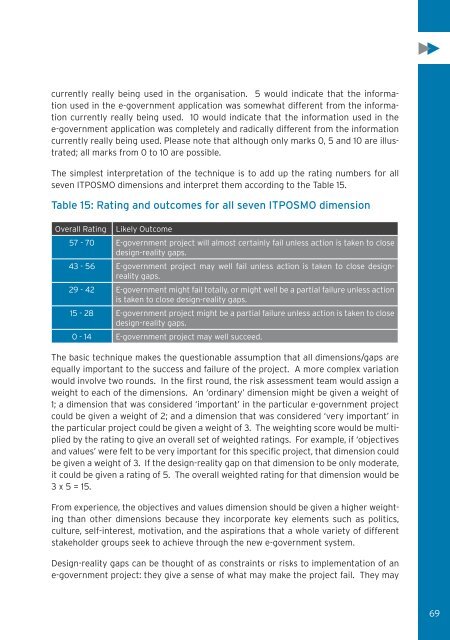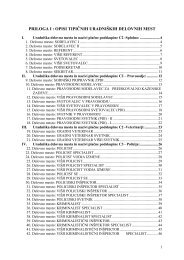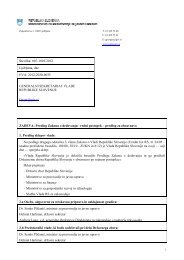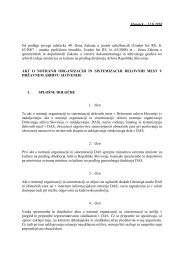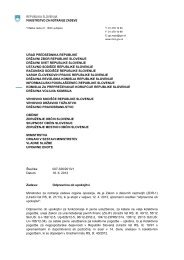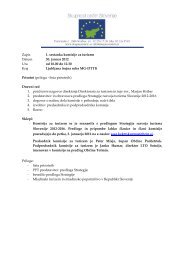for Local Governments
for Local Governments
for Local Governments
Create successful ePaper yourself
Turn your PDF publications into a flip-book with our unique Google optimized e-Paper software.
currently really being used in the organisation. 5 would indicate that the in<strong>for</strong>mation<br />
used in the e-government application was somewhat different from the in<strong>for</strong>mation<br />
currently really being used. 10 would indicate that the in<strong>for</strong>mation used in the<br />
e-government application was completely and radically different from the in<strong>for</strong>mation<br />
currently really being used. Please note that although only marks 0, 5 and 10 are illustrated;<br />
all marks from 0 to 10 are possible.<br />
The simplest interpretation of the technique is to add up the rating numbers <strong>for</strong> all<br />
seven ITPOSMO dimensions and interpret them according to the Table 15.<br />
Table 15: Rating and outcomes <strong>for</strong> all seven ITPOSMO dimension<br />
Overall Rating Likely Outcome<br />
57 - 70 E-government project will almost certainly fail unless action is taken to close<br />
design-reality gaps.<br />
43 - 56 E-government project may well fail unless action is taken to close designreality<br />
gaps.<br />
29 - 42 E-government might fail totally, or might well be a partial failure unless action<br />
is taken to close design-reality gaps.<br />
15 - 28 E-government project might be a partial failure unless action is taken to close<br />
design-reality gaps.<br />
0 - 14 E-government project may well succeed.<br />
The basic technique makes the questionable assumption that all dimensions/gaps are<br />
equally important to the success and failure of the project. A more complex variation<br />
would involve two rounds. In the first round, the risk assessment team would assign a<br />
weight to each of the dimensions. An ‘ordinary’ dimension might be given a weight of<br />
1; a dimension that was considered ‘important’ in the particular e-government project<br />
could be given a weight of 2; and a dimension that was considered ‘very important’ in<br />
the particular project could be given a weight of 3. The weighting score would be multiplied<br />
by the rating to give an overall set of weighted ratings. For example, if ‘objectives<br />
and values’ were felt to be very important <strong>for</strong> this specific project, that dimension could<br />
be given a weight of 3. If the design-reality gap on that dimension to be only moderate,<br />
it could be given a rating of 5. The overall weighted rating <strong>for</strong> that dimension would be<br />
3 x 5 = 15.<br />
From experience, the objectives and values dimension should be given a higher weighting<br />
than other dimensions because they incorporate key elements such as politics,<br />
culture, self-interest, motivation, and the aspirations that a whole variety of different<br />
stakeholder groups seek to achieve through the new e-government system.<br />
Design-reality gaps can be thought of as constraints or risks to implementation of an<br />
e-government project: they give a sense of what may make the project fail. They may<br />
69


